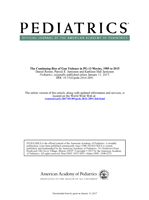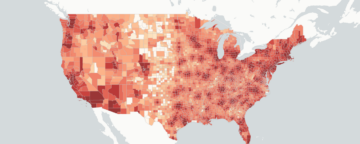 Abstract
Abstract
The Motion Picture Association of America created the parental guidance for children under age 13 years (PG-13) movie rating in 1984 to “strongly” caution parents about content that may not be suited for children of that age. According to that industry-supported group, “There may be depictions of violence in a PG-13 movie, but generally not both realistic and extreme or persistent violence,” (www.filmratings.com). Unlike PG-13 films, which are open to all, those rated R can only be seen in theaters by those under 17 years who are accompanied by a parent or other adult.
In a 2013 issue of Pediatrics, we reported that portrayals of gun violence in top-grossing PG-13 movies had more than doubled since 1985, the first full year of the PG-13 category. Indeed, such depictions were even more frequent in 2012 PG-13 films than in those rated restricted to age 17 years and older unless accompanied by an adult (R). What increasingly differentiates the instances of gun violence in PG-13 films from those rated R is not only the higher frequency in the PG-13 category but also these films’ erasure of the consequences (eg, blood and suffering) and greater likelihood that the violence will be perpetrated by or on comic book–inspired heroes and antiheroes (eg, Batman, Avengers, and X-Men). As the director of the Motion Picture Association of America’s ratings board told a journalist, it deems violence by such comic book figures as “representing a less realistic kind of violence that’s neither graphic nor brutal,” and hence by implication less harmful to children than the violence in R-rated films. Consistent with this philosophy, the violence in PG-13 films can be extensive but largely bloodless.

